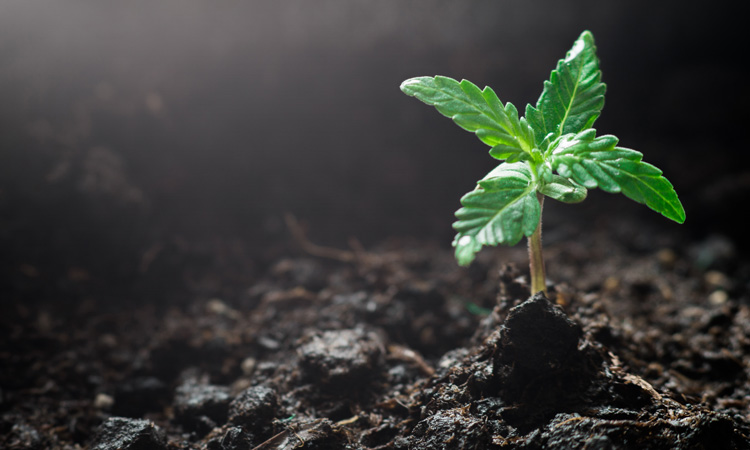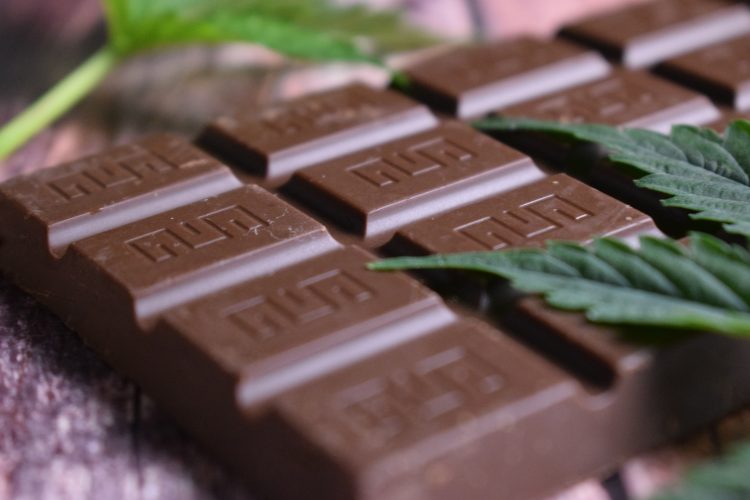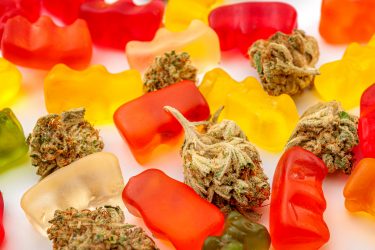Contaminates in CBD and ensuring consumer safety
- Like
- Digg
- Del
- Tumblr
- VKontakte
- Buffer
- Love This
- Odnoklassniki
- Meneame
- Blogger
- Amazon
- Yahoo Mail
- Gmail
- AOL
- Newsvine
- HackerNews
- Evernote
- MySpace
- Mail.ru
- Viadeo
- Line
- Comments
- Yummly
- SMS
- Viber
- Telegram
- Subscribe
- Skype
- Facebook Messenger
- Kakao
- LiveJournal
- Yammer
- Edgar
- Fintel
- Mix
- Instapaper
- Copy Link
Posted: 10 January 2020 | Ian Jessup, Stephen Goldman | No comments yet
In light of increasing consumer interest in CBD edibles, Stephen Goldman and Ian Jessup of PhytaTech highlight several important safety hurdles that companies must navigate to ensure safe products for its customers.


With all this rising interest and popularity among consumers, it is important to address the safety of edibles. More specifically, this involves considerations over potency, labelling and educating consumers on how to use these products, as well as the possible contaminants that could make an edible or beverage unsafe.
Beginning with the initial cannabis or hemp crop that is harvested, it is vital that the plant material is tested for contaminants
Confidence in cannabinoid potency
Potency testing is the practice of measuring the concentration of cannabinoids (THC, CBD, etc.) in cannabis and hemp products such as flowers, concentrates and infused products. The accuracy of potency testing results is the primary concern for most manufacturers of edibles and beverages. Single serving doses for gummies, chocolates and other candies is standard across both cannabis and hemp industries at 10mg of cannabinoid per serving. Beverages are more variable than edibles, and tinctures are even more varied in their doses than either.
Finally, edible oils tend to be the most concentrated of all the edible products with products containing up to a few thousand milligrams of cannabinoid per fluid ounce. Accurate dosing is important to both manufacturer and consumer, whether the edible is infused with the psychoactive cannabinoid THC or the non-psychoactive cannabinoid, CBD. However, paired with the need for accurate dosing to reflect what a manufacturer prints on the label is a need for accurate and easy-to-understand labelling on how to consume the edible product.
Unlike sugar or alcohol, which are both water-soluble and enter the bloodstream in as little as 15 minutes after consumption; cannabinoids are fat-soluble and may take a few hours to enter the bloodstream, although this is very formulation dependent. The importance of labelling and educating consumers on how to consume these products is most dramatically demonstrated by the rise of cannabis-related emergency room visits. For example, between 2014 and 2016 the UC Health University of Colorado Hospital Emergency Department reported that almost 10 percent of their 2,432 cannabis-triggered visits were attributed to the consumption of THC-infused edibles.2 Although this is not a major concern for CBD-infused edibles, the timing of doses to ensure efficacy of therapeutic windows is a concern.
Contamination vulnerabilities
Other more serious concerns for safety in edibles and beverages surround the possible contaminants that can enter them at several points through the manufacturing lifecycle. The cannabis lifecycle encompasses growing the plants, extracting and manufacturing the concentrates and production of infused finished products. Typical contaminants come in two general categories: chemical contaminants and biological contaminants.
Chemical contaminants:
- Pesticides used on the crops
- Mycotoxins produced by moulds growing on the plant material or on any prepared foodstuffs
- Residual solvents from the process of extracting, concentrating, distilling or isolating cannabinoids
- Heavy metals, either sequestered by the plant from the soil, water, or from contaminated packaging.
Biological contaminants:
- Microorganisms that are found on the plant material
- Microorganisms introduced through the manufacturing process that could cause human illness or spoilage of edible products.


The accuracy of potency testing results is the primary concern for most manufacturers of edibles and beverages. Single serving doses for gummies, chocolates and other candies is standard across both cannabis and hemp industries at 10mg of cannabinoid per serving
Testing throughout the entire cannabis/hemp lifecycle, from plant to final product, by certified and regulated testing laboratories to determine the absence/presence and amount of contaminants is key to making the informed decisions necessary to produce safe products to consume. Additionally, it can be beneficial for all participants in the edibles supply chain to develop relationships with the same testing laboratory. Building those relationships can assist all parties in finding solutions to problems, should they arise.
Beginning with the initial cannabis or hemp crop that is harvested, it is vital that the plant material is tested for contaminants, in accordance with state laws, before proceeding for processing. The cannabis plant is an excellent remediator of soils, meaning that it will readily sequester heavy metals such as arsenic, chromium, nickel, cadmium, mercury and lead from the soil into its tissues. It is certainly in the best interest of the grower to have soils tested before sowing seed. The soil the plant is grown in is the first stage at which a contaminant may enter the edible product. Later, during the edibles manufacturing process, heavy metals can contaminate the final product through cross-contamination or by contaminated final packaging (such as the lead found in vape cartridges in California in January 2019, and in vape cartridges in Michigan in May 2019).
Once the crop is growing, pesticides are applied to protect the cultivation from insects and fungal plant pathogens. These pesticides will vary from one state to the next, depending on state regulations and considering the local environment in which the crop is grown. When used in accordance with their labelling, per federal law, pesticides only persist in plant tissues at dangerous levels for a temporary period, before degrading to levels well below regulatory limits prior to harvest. However, crops may become contaminated with pesticides from other sources, including:
- Pesticides applied to neighbouring crops of a different type (corn, wheat, soy, etc.) that may be carried by the wind and contaminate an ‘outdoor grow’
- Pesticides from mosquito spraying by municipal authorities can contaminate outdoor grows
- Contaminated equipment (bins, fans, HVAC units and ducting, dehumidifiers, etc.) used in ‘indoor grows’ can contaminate a harvest.


Gummies infused with CBD have become highly popular, with sales on the rise and the edibles market as a whole anticipated to grow to more than $4.1 billion by 2022
Furthermore, pesticides can be concentrated during the extraction process. Here it becomes even more important to have appropriate laboratory testing and for growers and extractors to develop relationships with their testing labs to ensure complete understanding of their testing results. For example, a pesticide that may have been found below the regulatory limit can be concentrated to several times the initial levels found in the plant material during the extraction process – up to several times greater than the regulatory limit. At this point, the plant extract would have to undergo further processing via distillation to separate the cannabinoids from the pesticides. However, some specific pesticides may co-distil with the cannabinoids. While cannabis and hemp plant material is widely tested for pesticide residues, at the time of writing, plant extracts and other concentrated products of both cannabis and hemp are not widely tested for pesticides – in Colorado and many other states.
The other major product safety concern for a grow operation is the microbial load on the plant material. Microbiological testing for total yeasts and moulds may be used as an indicator to determine if a harvest should be tested for mycotoxins as well. Aspergillus and Penicillium moulds produce mycotoxins. These toxins can cause immediate illness upon consumption, damage the liver and kidneys, cause immune deficiency, may harm faetal development and have the potential to damage DNA leading to the development of cancer. They can persist throughout the extraction and distillation of cannabinoids. The appropriate use of fungicides can prevent moulds from growing at levels that would facilitate the accumulation of mycotoxins.
The other major product safety concern for a grow operation is the microbial load on the plant material
They can, however, during the edibles manufacturing process, be introduced from other contaminated foodstuffs such as cereals, oilseeds, tree nuts and spices. They can also contaminate edibles after manufacturing if moulds contaminate the final product. The use of proper kill steps during the edibles manufacturing process to prevent mould growth is paramount. Kill steps/pasteurisation comes into play to prevent microbial contamination that may cause the final product to spoil and prevent the introduction of pathogenic organisms that may cause foodborne illness. In the City of Denver, many products have been audited and quarantined until proper sterilisation steps have been taken to reduce the likelihood of botulism contamination.
Another class of contaminants are the residual solvents used in concentrating and isolating cannabinoids. Cannabinoid concentrates such as distillates and isolates are widely tested for the presence of residual solvents. The most common solvents that remain are ethanol in distillates and pentane in CBD isolates, though other solvents may exist and will vary from state to state.
More often, ethanol is a common constituent in tinctures. Regulatory limits on residual solvents are typically set with a mindset concerned with inhalable products and are not necessarily applicable to edible products. However, it is important to ensure that concentrated cannabinoids are free of contaminants that may pose a health risk, such as benzene (a known carcinogen) or methanol (a potent toxicant). Use of high-purity solvents in the extraction and concentration process followed by purging concentrates in a vacuum oven for an adequate period or distillation keep potential contaminants to a minimum.
Regulations are key
Products are only as safe for the consumer as the regulatory framework requires them to be. In those states where cannabis has been legalised, the regulatory limits on contaminants in products have been in place for a while. However, those same regulatory limits have not been equally applied to the hemp industry nationwide. In Colorado, for example, a current hemp initiative, coined CHAMP (Colorado Hemp Advancement & Management Plan) is currently working to define proper safety and regulatory frameworks for hemp products in the state. Although many participants in the hemp industry have their harvests and products voluntarily tested, those hemp products often do not fall under the same regulatory oversight as cannabis products.
In other words, a hemp-derived product that fails a contaminant test according to the guidelines specified for the cannabis industry might still enter the market where the consumer may purchase the product, because there does not yet exist a unified regulatory framework for both industries. The regulatory apparatus for the hemp industry is being diligently and thoughtfully assembled, however its practical application currently varies from state to state. In the meantime, having comprehensive certificates of analysis that demonstrate that hemp-derived edibles are free of contaminants in accordance with some regulatory requirements will serve the interests of consumer safety.
References
1. Jeff Desjardins, “The Hidden Problem Looming Over the Cannabis Beverages & Edibles Market”, Visual Capitalist, June 3, 2019
2. Roni Caryn Rabin, “Marijuana Edibles May Pose Special Risks” The New York Times, March 25, 2019
About the author


Stephen Goldman
Stephen Goldman is an analytical chemist with extensive industrial and academic laboratory experience. He acts as the Laboratory Director at PhytaTech, a certified cannabis and hemp testing facility located in Denver, CO, USA. He brings expertise in GC, HPLC and mass spectrometry, chemical and biochemical engineering as well as project and business management. Prior to joining PhytaTech, Stephen served as an analytical chemist at the CLIA and CAP certified Forensic Laboratories, overseeing toxicology testing. He has also worked for Novartis (Sandoz), Kemin Industries, Genentech and served as a contract chemist, as well as published several research papers in the fields of biological and analytical chemistry.


Ian Jessup
Ian Jessup is a chemist and molecular biologist. He is the Supervisory Chemist at PhytaTech and has worked in the cannabis industry doing QA/QC testing for over three years. He has a rich background in research and analytics, from cancer research, scaling up processes involved in utilising biotechnology in the mining and energy industries, and product development in neutraceuticals. Outside his career as a chemist, Ian dedicates himself to work in habitat conservation.
Issue
Related topics
CBD hemp & cannabis, Food Safety, Health & Nutrition, The consumer







